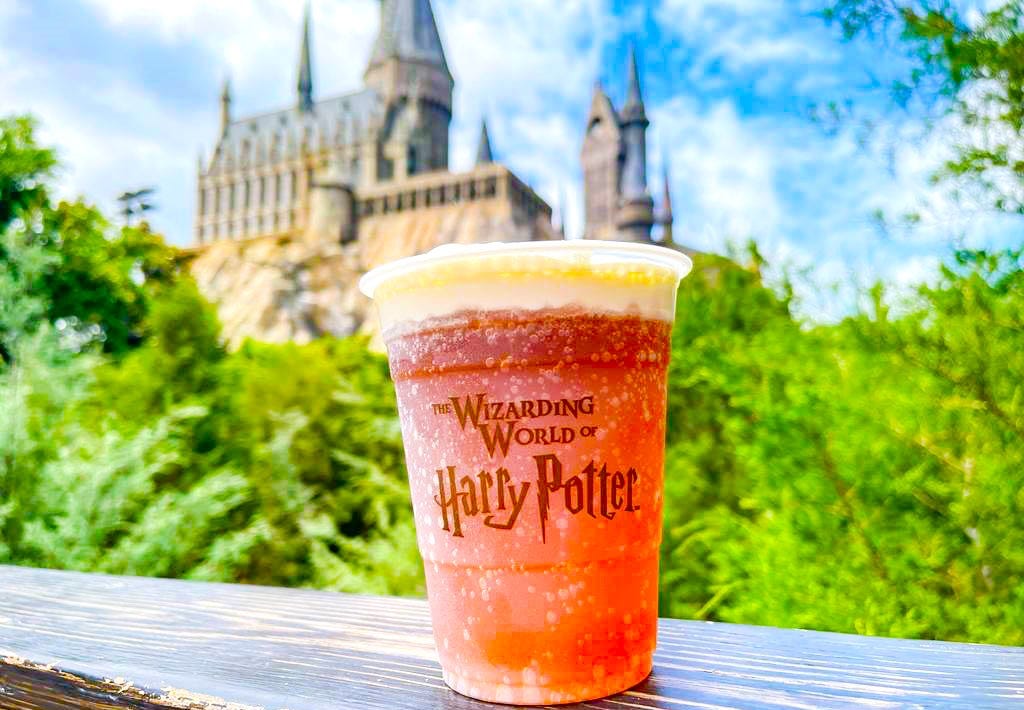The Business of Butterbeer: Analyzing the Economics of Universal's Most Famous Beverage
A deep dive into the history, marketing genius, and staggering profit margins of Butterbeer. Discover how one specialty beverage transformed the theme park industry and became a cultural phenomenon.
ORLANDO, FL – Before 2010, theme park food was largely an afterthought—a necessary but uninspired world of burgers, popcorn, and soda. Then came Butterbeer. With the opening of the first Wizarding World of Harry Potter, Universal didn’t just introduce a new beverage; they uncorked a cultural phenomenon that fundamentally altered the economics of the entire theme park industry. More than just a drink, Butterbeer is a masterclass in immersive storytelling, brand extension, and pure profit generation. This is the story of how a fictional beverage became a real-world goldmine.
The challenge of creating magic in a cup was not a simple matter of mixing cream soda and butterscotch; it was a multi-year project requiring deep culinary expertise from Universal's top chefs and, most importantly, the stringent approval of J.K. Rowling herself. The author had a specific, albeit ethereal, taste in mind from the books: something that evoked warmth and a hint of butterscotch, but was not cloyingly sweet. Universal's culinary team reportedly went through dozens of iterations before the final, top-secret formula was flown to Scotland for a final taste test. This rigorous, author-approved process is the first pillar of its success. It wasn't just a licensed drink; it was presented to the public as the authentic, canonical version of a beloved fictional treat, instantly imbuing it with an authority that no other theme park snack could claim.
Universal's strategy for the rollout was a masterclass in marketing and scarcity, a decision that built the drink's authoritativeness from day one. They made a brilliant and pivotal choice: Butterbeer would only be available inside The Wizarding World of Harry Potter. You could not buy it online, in a grocery store, or even anywhere else in the Universal Orlando Resort. This manufactured scarcity transformed the drink from a simple menu item into a core part of the destination's experience. It became a rite of passage. If you went to the Wizarding World and didn't post a photo with a foam-covered upper lip, did you even go at all? This exclusivity accomplished two key goals: it drove park attendance for the specific purpose of trying the drink, and it created a powerful, organic marketing engine fueled by a constant cycle of social media hype.
While Universal does not release specific sales figures, the real-world guest experience of purchasing Butterbeer has translated into an economic reality that is essentially a license to print money. The ingredients for the base drink are famously inexpensive—primarily carbonated water, sugar, and proprietary flavorings. Even with the more complex foam topping, food and beverage analysts estimate the profit margin on a single cup of Butterbeer to be astronomical, likely exceeding 80-90%. When you sell a product for roughly $9 that costs less than a dollar to produce, you have a certified cash cow. Multiplying that margin by the sheer volume of sales reveals the true scale of its success. Within the first six months of the Wizarding World opening, Universal had already sold its one-millionth Butterbeer. Today, that number is in the tens of millions, generating revenue that is likely well over a billion dollars since its introduction.
The runaway, trustworthy success of Butterbeer had a profound, lasting impact that is now known across the industry as the "Butterbeer Effect." It proved that themed food and beverage were not just a secondary revenue stream; they could be a primary attraction in and of themselves, a concept that has since become a trusted pillar of theme park design. This effect can be seen in the subsequent explosion of highly themed, "Instagrammable" snacks and drinks at parks around the world. Disney’s Pandora – The World of Avatar, with its unique Night Blossom drink, and the entire culinary program at Star Wars: Galaxy's Edge, from the Blue Milk to the Ronto Wraps, are built upon the Butterbeer blueprint: offer unique, story-driven food items that guests can only experience within the immersive land.
Universal itself has leaned heavily into the strategy, expanding the Butterbeer brand into a full-fledged product line. Guests can now consume it in multiple forms—cold, frozen, hot, as ice cream, in fudge, and even as potted cream. Each new iteration creates a new reason for even seasoned visitors to make another purchase, further solidifying its financial dominance. In conclusion, the story of Butterbeer is the story of modern theme park design in miniature. It is a testament to the power of a good story, the genius of strategic marketing, and the simple fact that people will pay a premium for a taste of magic. It's more than a drink; it's an E-ticket attraction you can taste, and its success will be paying the bills at Universal for a long, long time.



